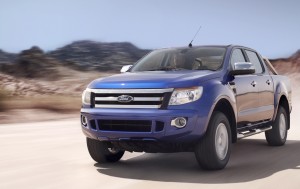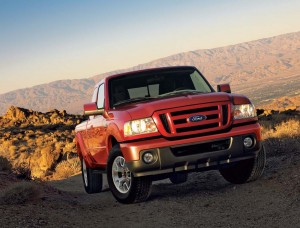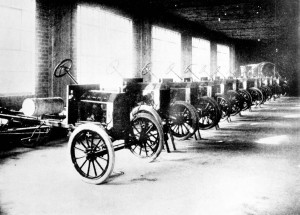The auto industry is back and providing one of the few sources of new jobs in an otherwise struggling U.S. economy. Or so one might believe in most parts of the country. Just don’t try to convince the workers at Ford’s Twin Cities Assembly Plant.
The maker hasn’t set a specific time yet but sometime around Friday it is expected that the last Ford Ranger will roll down the assembly line and the 86-year-old plant, located just outside Minneapolis, will finally shut down.
Though Ford has added thousands of jobs since the depths of the recession and promised to add thousands more as part of its new contract with the United Auto Workers Union about 800 union workers will be idled by the Twin Cities shutdown unless they can find a way to transfer to some other plant in the Ford network.
The creaky old factory has actually lasted far longer than most of its workers had anticipated. A report in the Minneapolis Star Tribune notes that rumors of the factories demise were already circulating by 1949, shortly after the plant was converted back from war production.
“It looks like (they were) right, but it took Ford quite a while to finally get around to it,” the paper quoted 80-year old former autoworker Del Peterson.
During nearly nine decades, the factory has produced everything from Model Ts to faux wood-covered Country Squire station wagons. Most recently it worked on the Ford Ranger, the maker’s once widely popular compact pickup truck. Despite the age of the Ranger, which hasn’t had a complete remake in years, it has maintained unexpectedly strong demand – enough that Ford has kept it in production for several years longer than originally planned.
In fact, the maker might have continued producing the pickup indefinitely were it not for tough new rollover safety standards that simply couldn’t be met without a significant redesign.
Ironically, there’s a new Ranger that could meet the new regulations. It went into production at a Thai assembly plant earlier this year and several other factories in Ford’s global network will also be rolling out the new Ranger in the coming months. But the list doesn’t include Twin Cities.

An all-new Ranger recently went into production in Thailand but there are no plans to produce or market it in the U.S.
The U.S. market for compact pickups has steadily declined over the years, even faster than the overall market for trucks – full-size models like the Ford F-Series actually rebounding in recent months as fuel prices have leveled off. Mark Fields, Ford’s President of the Americas, has explained that it would be too difficult to market both the Ranger and the F-Series since the smaller truck would cost nearly as much as its bigger brother. And with the addition of several new V-6 powertrains, including Ford’s high-mileage EcoBoost, the lighter, smaller Ranger wouldn’t deliver much of a mileage advantage over the F-Series.
So, once the last Ranger rolls out the million square-foot plant will shut down.
It will be an especially big setback for Minnesota which has lost 100,000 of its 400,000 manufacturing jobs in little more than a decade, according to a report in the Star. It has also lost key employers like Northwest Airlines, which merged two years ago with Atlanta-based Delta.
Not everyone is convinced Ford is making the right decision. While Chrysler has also pulled out of the compact pickup market General Motors is renewing its entry into the segment. And Honda has announced plans to redesign the slow-selling Ridgeline. Toyota, meanwhile, is happily position to pick up any slack with its Tacoma.
Ford officials have said they are leaving open the possibility of eventually bringing the new Ranger to the U.S. Another big bump in fuel costs could change the economic equation in favor of a compact model.
But even if that happens the maker would find a new home for the smaller truck. Twin Cities would simply require too much of an upgrade to bring it up to modern manufacturing standards – which requires a plant to be flexible enough to handle several different products simultaneously and to be able to shift between them depending on changes in market demand.


